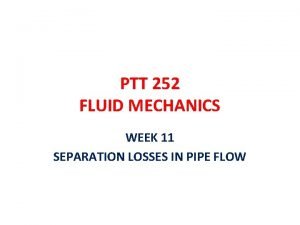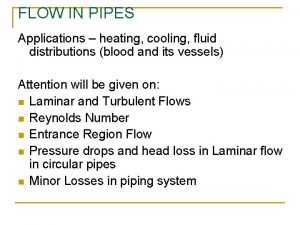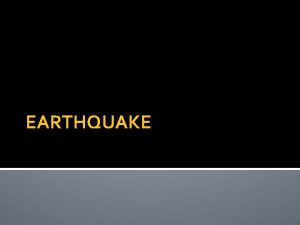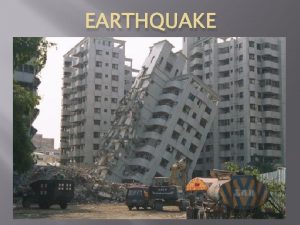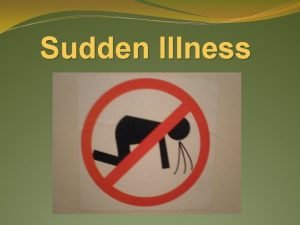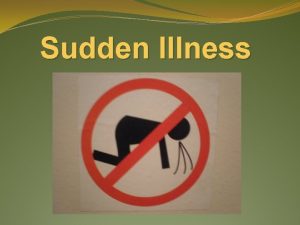Earthquake Introduction 121415 Earthquake Key Terms Earthquake Sudden







- Slides: 7

Earthquake Introduction 12/14/15

Earthquake Key Terms �Earthquake � Sudden, violent shaking of the ground due to movement of tectonic plates �“Seismos” � Greek word meaning to shake �Seismology � Study of earthquakes �Seismologist � Scientist that studies earthquakes �Seismic waves � Waves of energy that travel through Earth during an earthquake �Seismograph � Instrument used to record earthquakes � Produces seismograms

What Causes Earthquakes? (Myths) �Ancient Greeks thought strong winds blowing through lots of underground caverns caused earthquakes �Up to 17 th century people thought large, restless creatures underneath the surface caused earthquakes

What Actually Causes Earthquakes �Most earthquakes take place near tectonic plates � Convergent: strong e-quakes, deep in Earth’s crust � Divergent: weak, shallow (near surface of Earth’s crust) � Transform: moderate, shallow �Movement of plates results in rock deformation

Deformation of Rocks Plastic Deformation �Does NOT lead to earthquakes �Rock layers fold like clay �After pressure from plates is released, rocks stay in folded shape Elastic Deformation �Does lead to earthquakes �Rocks bend and stretch like rubber bands �Elastic Rebound occurs when pressure is released � Rock snaps back to original shape

Seismic Waves �Two main types � Body Waves: travel through the Earth � Surface Waves: travel at Earth’s surface (obviously) �Waves travel at different speeds and move material they travel through differently

Three Unique Waves �P – Waves: � Primary (arrive first, travel fastest) � Pressure (squeeze and stretch rock layers) � Can travel through solids, liquids, gases �S – Waves: � Secondary (arrive second, travel slower) � Shear (swing side to side) � Can only travel through solids �Surface Waves (or L – Waves): � Slower than Body Waves (P & S Waves) � Travel along top of Earth’s crust � Move ground in circular motion (like a roller coaster) � Most destructive (damage) seismic wave






